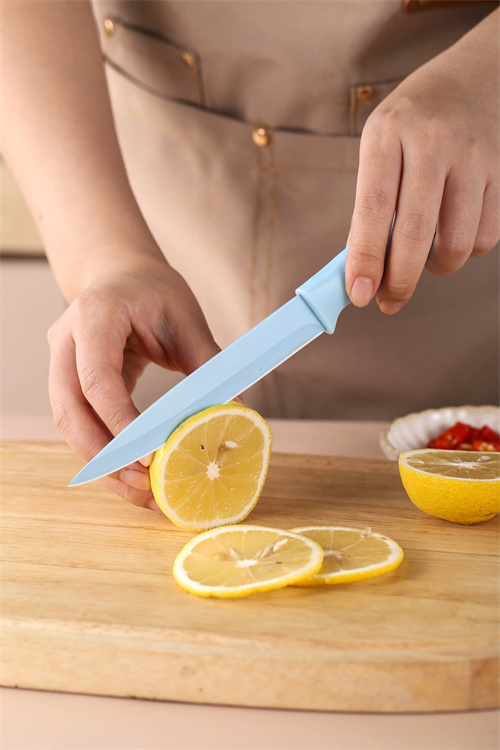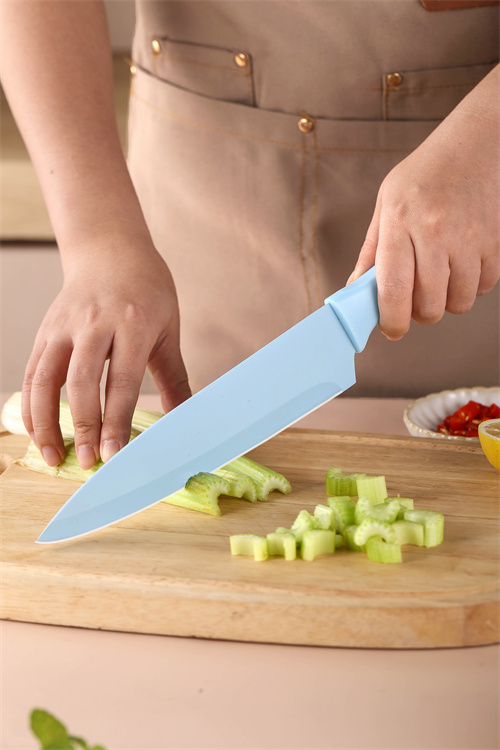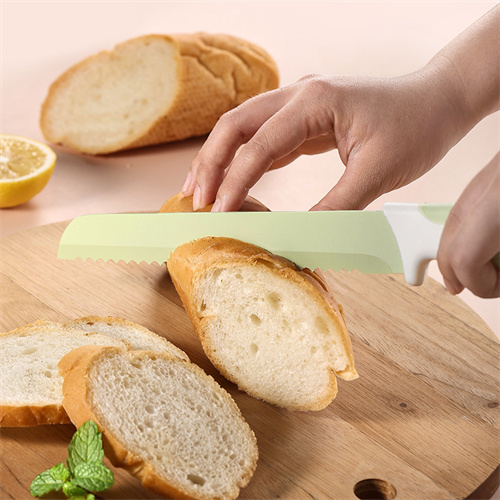

Views: 560 Author: sales@insightknife.com.cn Publish Time: 2025-01-17 Origin: Site








Content Menu
● Understanding Kitchen Knives
>> Importance of Preventive Maintenance
● Cleaning Your Kitchen Knives
>> Hand Washing vs. Dishwasher
>> Special Considerations for Different Materials
● Frequently Asked Questions regarding Kitchen Knife
>> 1. How often should I sharpen my kitchen knives?
>> 2. What is the best way to store kitchen knives?
>> 3. Can I use a dishwasher to clean my kitchen knives?
>> 4. What should I do if my knife has rust spots?
>> 5. How can I tell if my knife needs sharpening?
Maintaining kitchen knives is essential for ensuring their longevity, performance, and safety. Proper preventive maintenance not only keeps knives sharp but also enhances the overall cooking experience. This article will delve into the various aspects of knife maintenance, including cleaning, sharpening, storage, and inspection. Each section will provide detailed insights and practical tips to help you care for your kitchen knives effectively.
Kitchen knives come in various types, each designed for specific tasks. Understanding the different types of knives can help you choose the right one for your culinary needs and apply the appropriate maintenance techniques. Common types include:
Chef's Knife: A versatile knife used for chopping, slicing, and dicing. It typically has a broad blade that tapers to a point, allowing for a rocking motion while cutting. This knife is often considered the workhorse of the kitchen and is essential for any home cook.
Paring Knife: Ideal for peeling and intricate cutting tasks. With a short blade, it provides precision for tasks like deveining shrimp or removing seeds from fruits. Its small size makes it easy to handle for detailed work.
Serrated Knife: Best for cutting bread and other soft items. The saw-like edge allows it to slice through crusty bread without crushing it, making it a must-have for bakers and sandwich lovers.
Boning Knife: Used for deboning meat and fish. Its thin, flexible blade allows for precise cuts around bones and joints, making it an invaluable tool for butchering and filleting.
Understanding the purpose of each knife helps in applying the right maintenance techniques, ensuring that each tool remains effective for its intended use.

Preventive maintenance is crucial for several reasons:
Safety: A sharp knife is safer than a dull one, as it requires less force to cut, reducing the risk of slips and accidents. Dull knives can lead to frustration and increased chances of injury, making it essential to keep them well-maintained.
Efficiency: Well-maintained knives perform better, making food preparation quicker and easier. A sharp knife can significantly reduce the time spent on meal prep, allowing for a more enjoyable cooking experience.
Longevity: Regular maintenance extends the life of knives, saving money in the long run. Investing time in caring for your knives can prevent costly replacements and ensure that your tools remain reliable for years to come.
By understanding the importance of preventive maintenance, you can appreciate the value of taking care of your kitchen knives.

The best practice for cleaning kitchen knives is hand washing. Dishwashers can cause damage due to high temperatures and the jostling of knives against other utensils. To clean knives effectively:
Use Warm Water and Soap: Rinse the knife under warm water and apply a few drops of mild dish soap. This helps to remove food particles and grease without damaging the blade.
Gentle Scrubbing: Use a soft sponge or cloth to scrub the blade, avoiding abrasive materials that can scratch the surface. Pay special attention to the handle and bolster, as these areas can accumulate grime.
Rinse and Dry: Rinse the knife thoroughly and dry it immediately with a soft towel to prevent rust. Leaving knives wet can lead to corrosion, especially for carbon steel blades.
Knives can be made from various materials, including stainless steel, carbon steel, and ceramic. Each material requires specific care:
Stainless Steel: Resistant to rust but can stain. Regular cleaning and drying are essential to maintain its appearance and performance. Using a non-abrasive cleaner can help keep the blade looking new.
Carbon Steel: Prone to rusting; requires immediate drying and occasional oiling to maintain its condition. Applying a thin layer of food-safe mineral oil can help protect the blade from moisture.
Ceramic: Requires careful handling as they can chip easily. Clean with a soft cloth and avoid abrasive cleaners. Store ceramic knives in protective sheaths to prevent damage.
Understanding the specific care requirements for each type of knife material can help you maintain their performance and appearance over time.
A sharp knife is not only more effective but also safer. Dull knives can slip and cause accidents. Regular sharpening is necessary to maintain the edge. Knowing when to sharpen your knives is crucial; if you find yourself applying more pressure while cutting, it may be time to sharpen.
Several tools can be used for sharpening knives:
Whetstone: A traditional method that requires skill but provides excellent results. Whetstones come in various grits, allowing for both sharpening and honing. Learning to use a whetstone can be a rewarding skill for any home cook.
Honing Rod: Used to realign the blade edge between sharpenings. Regular honing can extend the time between sharpenings, keeping your knife in optimal condition.
Electric Sharpeners: Convenient but can remove more material than necessary if not used correctly. It's essential to follow the manufacturer's instructions to avoid damaging the blade.
Choose the Right Angle: Most kitchen knives require a sharpening angle of 15 to 20 degrees. Maintaining a consistent angle is key to achieving a sharp edge.
Use the Whetstone: Wet the stone and run the blade along it, applying even pressure. Start with the coarser side to reshape the edge, then switch to the finer side for polishing.
Honing: After sharpening, use a honing rod to align the edge. This step is crucial for maintaining sharpness and ensuring that the knife cuts smoothly.
By mastering the sharpening process, you can keep your knives in peak condition, enhancing your cooking efficiency.

Honing is the process of realigning the edge of the knife blade. It does not sharpen the knife but maintains its sharpness between sharpenings. Regular honing can significantly improve the performance of your knives, making it an essential part of knife maintenance.
Hold the Honing Rod Vertically: Place the rod in a stable position. Ensure that it is secure to prevent slipping during the honing process.
Angle the Knife: Hold the knife at a 15 to 20-degree angle against the rod. This angle is crucial for effective honing.
Swipe the Blade: Gently swipe the blade down the rod, alternating sides. This technique helps to realign the edge and maintain sharpness.
Incorporating honing into your regular knife maintenance routine can prolong the time between sharpenings and keep your knives performing at their best.
Storing knives correctly is vital to prevent damage and maintain sharpness. Here are some effective storage solutions:
Knife Blocks: Provide safe storage and protect the blades from damage. Knife blocks can also keep your knives organized and easily accessible.
Magnetic Strips: Keep knives visible and easily accessible while preventing blade dulling. Magnetic strips can be mounted on walls, saving counter space and adding a modern touch to your kitchen.
Sheaths: Use blade guards for individual knives, especially when storing them in drawers. Sheaths protect the blades from nicks and scratches, ensuring they remain sharp.
Avoid storing knives loosely in drawers, as this can lead to dulling and damage. Always ensure that knives are clean and dry before storage. Additionally, avoid stacking knives on top of each other, as this can cause blades to chip or become dull.
By implementing proper storage techniques, you can protect your knives and ensure they remain in excellent condition.
Regularly inspect knives for any signs of damage, such as nicks, chips, or bent blades. Addressing these issues promptly can prevent further damage and ensure safety. A thorough inspection should be part of your routine maintenance, allowing you to catch problems early.
Look for the following signs that indicate a knife may need maintenance:
Dullness: If the knife struggles to cut through food, it may need sharpening. Regularly testing the sharpness of your knives can help you stay ahead of maintenance needs.
Rust Spots: Any rust indicates that the knife needs immediate cleaning and possibly oiling. Rust can compromise the integrity of the blade, so addressing it quickly is essential.
Loose Handles: Check for any looseness in the handle, which can be dangerous. If a handle feels unstable, it may need to be repaired or replaced to ensure safe use.
By conducting regular inspections, you can maintain the safety and effectiveness of your kitchen knives.
Preventive maintenance of kitchen knives is essential for safety, efficiency, and longevity. By following proper cleaning, sharpening, honing, storage, and inspection techniques, you can ensure that your kitchen knives remain in excellent condition. Investing time in maintaining your knives will enhance your cooking experience and prolong the life of these essential tools.
You should sharpen your kitchen knives every few months, depending on usage. If you use your knives daily, consider sharpening them every 4 to 6 weeks. For less frequent use, sharpening every 6 months may suffice. Regular honing can extend the time between sharpenings.
The best way to store kitchen knives is in a knife block, on a magnetic strip, or in protective sheaths. Avoid storing them loosely in drawers, as this can dull the blades and cause damage. Proper storage helps maintain sharpness and prevents accidents.
No, it is not recommended to use a dishwasher to clean kitchen knives. The high temperatures and movement in the dishwasher can damage the blades and handles. Hand washing with warm water and mild soap is the best practice for cleaning knives.
If your knife has rust spots, clean it immediately with a mixture of baking soda and water or a rust eraser. After removing the rust, dry the knife thoroughly and consider applying a thin layer of food-safe mineral oil to protect it from future rusting.
You can tell if your knife needs sharpening if it struggles to cut through food, requires excessive pressure, or leaves ragged edges on cuts. A simple test is to slice through a piece of paper; if the knife tears the paper instead of cutting cleanly, it likely needs sharpening.